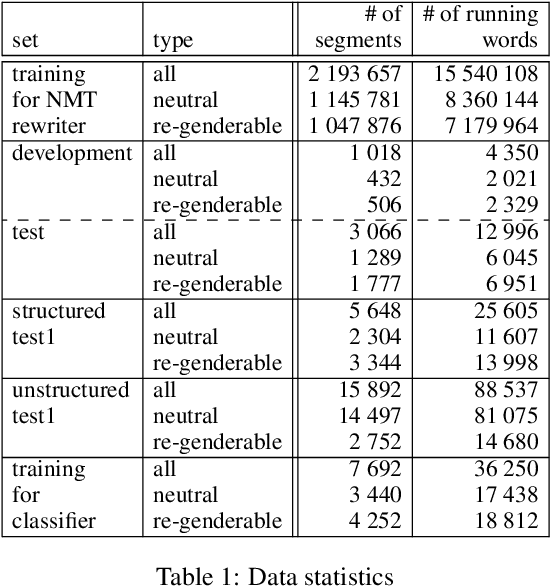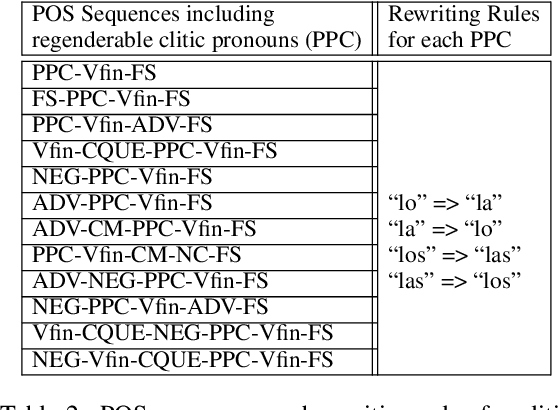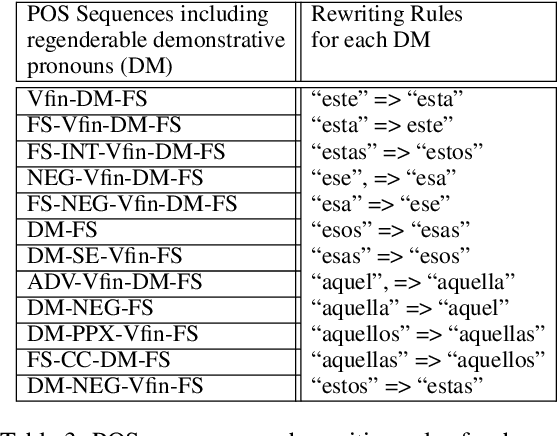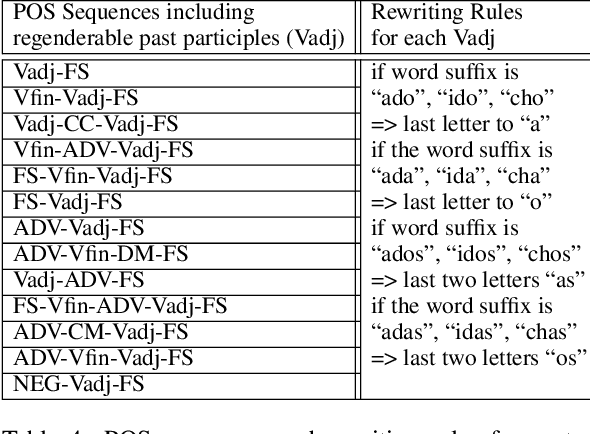Declan Groves
Generating Gender Augmented Data for NLP
Jul 13, 2021



Abstract:Gender bias is a frequent occurrence in NLP-based applications, especially pronounced in gender-inflected languages. Bias can appear through associations of certain adjectives and animate nouns with the natural gender of referents, but also due to unbalanced grammatical gender frequencies of inflected words. This type of bias becomes more evident in generating conversational utterances where gender is not specified within the sentence, because most current NLP applications still work on a sentence-level context. As a step towards more inclusive NLP, this paper proposes an automatic and generalisable rewriting approach for short conversational sentences. The rewriting method can be applied to sentences that, without extra-sentential context, have multiple equivalent alternatives in terms of gender. The method can be applied both for creating gender balanced outputs as well as for creating gender balanced training data. The proposed approach is based on a neural machine translation (NMT) system trained to 'translate' from one gender alternative to another. Both the automatic and manual analysis of the approach show promising results for automatic generation of gender alternatives for conversational sentences in Spanish.
Understanding Meanings in Multilingual Customer Feedback
Jun 05, 2018


Abstract:Understanding and being able to react to customer feedback is the most fundamental task in providing good customer service. However, there are two major obstacles for international companies to automatically detect the meaning of customer feedback in a global multilingual environment. Firstly, there is no widely acknowledged categorisation (classes) of meaning for customer feedback. Secondly, the applicability of one meaning categorisation, if it exists, to customer feedback in multiple languages is questionable. In this paper, we extracted representative real world samples of customer feedback from Microsoft Office customers in multiple languages, English, Spanish and Japanese,and concluded a five-class categorisation(comment, request, bug, complaint and meaningless) for meaning classification that could be used across languages in the realm of customer feedback analysis.
 Add to Chrome
Add to Chrome Add to Firefox
Add to Firefox Add to Edge
Add to Edge